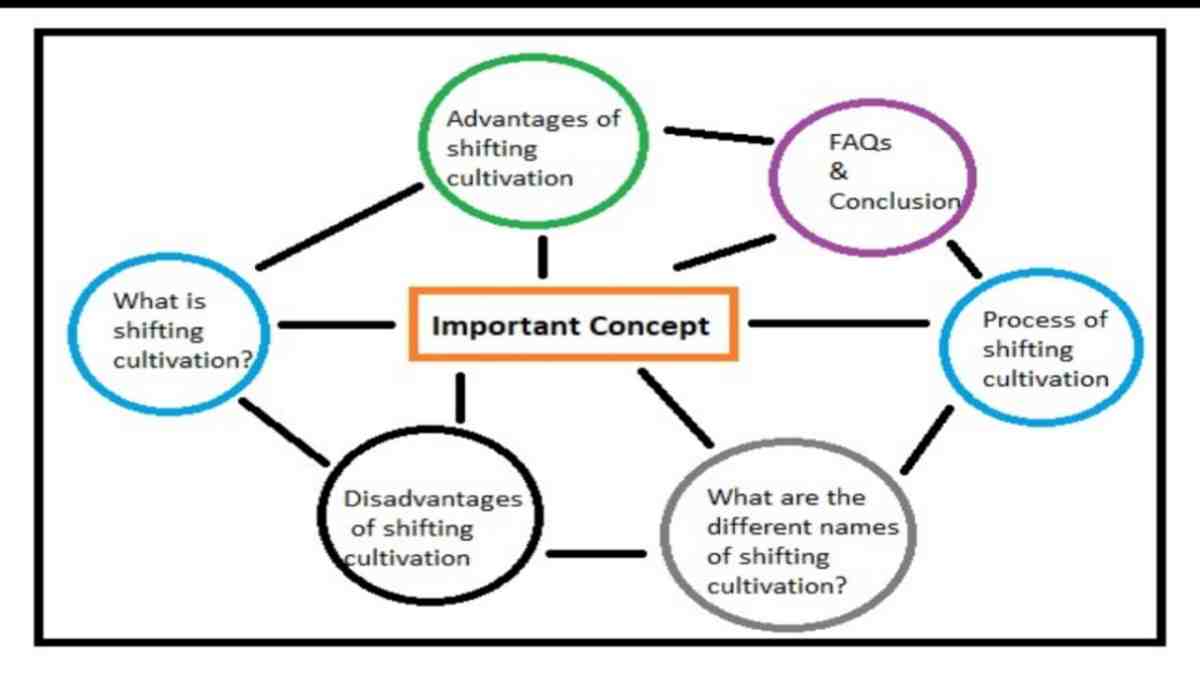Hello Friends, welcome to my website Khan Study. In today’s article we are going to know about What is Shifting Cultivation what are its disadvantages?. So let’s discuss in details.
Table of Contents
What is Shifting Cultivation?
Shifting cultivation is a primitive method of cultivation in the hill areas. Shifting cultivation is also known as slash and burn agriculture, migratory primitive agriculture or land rotation agriculture. In north east India it is also called “Thum Cultivation“.
Process of Shifting Cultivation
Shifting cultivation in India has its special process. They are as follows-
• Selection of a particular plot in the hill region.
• Cut the forest and bushes in the selected area in the month of December and January.
• Drying and burning the jungle for making it clear.
• With the help of simple instruments like digging sticks holes are made on land for sowing seeds of several crops.
After harvesting the same process is followed again in another part of the hill area.
Advantages of shifting cultivation (Merits)
The shifting cultivation in India in the hill areas in the north-east provides following advantages-
• It provides a very easy method for the preparation of land for cultivation. Hence it requires less investment.
• This system is free from the danger of food and drought.
• The mountain systems are providing regular water supply for cultivation at moderate rate.
• It provides basic foods to the hill people in the North-East area.
disadvantages of shifting cultivation (Demerits or Problem)
This cultivation is danger both for social and economical points of view. Following are the important points of shifting cultivation disadvantages-
• The most important problem of this cultivation is that this process destroys the forest in the hill areas. As a result heavy soil erosion during rain fall, arises in many parts of North-East.
• Destruction of forest in the hill area causes rise in the river level. The major rivers like Brahmaputra, Barak generate heavy flood in the plain areas due to rise the river med.
• Another problem of this cultivation is that as there is no private ownership of land. Thus the farmers do not undertake any measures for soil conservation or soil improvement.
• It causes deforestation on a large scale and is highly destructive results.
• This cultivation causes a high national waste as it converts a green land area into waste land area.
• With the help of this cultivation the farmers can not able to produce commercial crops. It is an non profitable agricultural profits.
• This cultivation upsets the ecological balance of the nature.
Shifting Cultivation Policy
Shifting cultivation is a primitive method of cultivation which has its own limitation. The Central and State government undertake several measures to control it. The important policies are mentioned in the following ground-
• In order to settle the tribal families the government adopted different measures. In this regarded major importance is given on the permanent agricultural practices. The most promising prospects are rubber plantation, coffee plantation and tea plantation.
• In order to protect the biodiversity the central government has already taken steps. The planning commission stopped the this cultivation in all the states of the North-East India.
• In order to settle the Thum Cultivators several NGOs (Non-governmental Organization) have been performing different types of handicrafts works in the hill areas.
• During the 6th plan, the North- Eastern Council has introduced a concept of water shed management for optimum use of land and resources. Under this scheme a special cropping pattern has designed to encourage the cultivators.
• The government provided different types of welfare resources for socio-economic upliftment of the tribal community. As for example- Free education, health care facilities, rationing, water supply, etc. Such programmes divert the jhum cultivators from traditional way of living to modern way.
FAQs
What are the different names of shifting cultivation?
Shifting cultivation different names are slash and burn agriculture, migratory primitive agriculture or land rotation agriculture. In north east India it is also called Thum Cultivation.
What is Thum Cycle?
In shifting cultivation, cultivation in a particular area for one or two years and then moving into other areas and again returning to the 1st area for cultivation complete a cycle. This is called thum cycle.
Define shifting cultivation?
Shifting cultivation is a primitive method of cultivation on the hill areas.
Conclusion
So friends, this was the concept of Shifting Cultivation. Hope you get the full details about it and hope you like this article.
If you like this article, share it with your friends and turn on the website Bell icon, so don’t miss any articles in the near future. Because we are bringing you such helpful articles every day. If you have any doubt about this article, you can comment us. Thank You!
Read More Article


